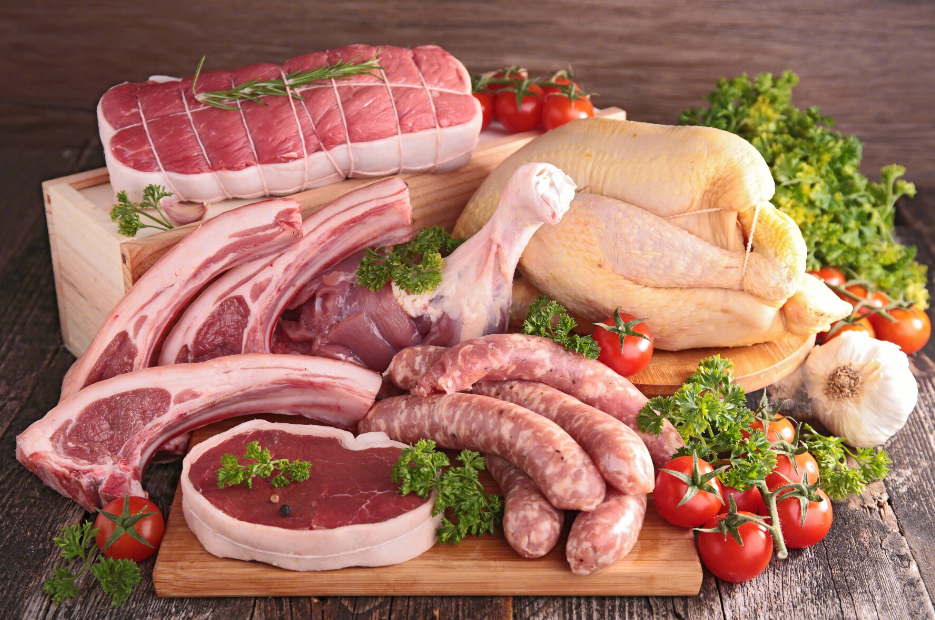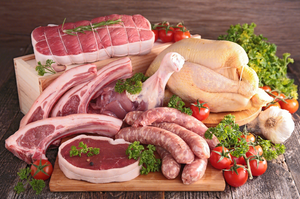
Meat inspection standards and methods Inspection and auditing services for factories
Meat products, as an important category of daily consumer goods, their quality and safety directly affect the health of consumers. During the inspection, factory verification, and product inspection and certification processes of meat, a strict quality control system must be established. This article will systematically elaborate on the inspection standards, testing methods, and quality certification requirements for meat, providing professional guidance for relevant practitioners.
I. Certification Standards for Raw Meat Products
(1) Certification for Fresh Meat Products
Pork Quality Certification Standards
Color certification: The muscle is uniformly red and has a lustrous appearance, while the fat is white.
Texture inspection: The surface is slightly dry or slightly moist, and does not stick to the hand.
Elasticity test: The indentation immediately returns to its original state.
Hygiene standards: No mud or blood stains, the edges of the meat are neat without any broken bones.
Poultry meat quality certification standards
Freshness test: The eyes are plump and the skin has a lustrous appearance.
Perception verification: The muscle section is shiny and does not stick to the hand.
Quality requirements: No feathers remaining, knife edges should be straight and well-defined.
Weight standard: Meets specification requirements, slaughtered and delivered on the same day.
(2) Inspection and Certification of Organs and By-products
Certification of Intestine Products
Appearance standard: Milky white, complete shape
Quality requirements: No odor, no pathological phenomena
Processing specification: No intestinal head hair ring, fat contents
Certification of liver and kidney products
Color standard: Consistent with the natural color of the organ
Quality inspection: The texture is firm and elastic.
Health certification: No lesions, no parasites
Certification of Hoof and Claw Products
Processing standard: Remove the hoof shell, without the hoof tendons.
Cleaning requirements: No hair, no black dirt between toes
Quality certification: No residual rosin
II. Sensory Inspection Certification System for Meat
(1) Inspection and Certification of Pork
Color Certification
Inspection standard: The muscles should be uniformly red in color, and the fat should be pure white.
Certification requirements: Shiny surface, no abnormal color changes
Appearance inspection
Hygiene standards: No mud or blood stains, the edges of the meat are neat.
Quality certification: No mucus excretion, no parasites
Odor Authentication
Testing method: Identifying inherent odors through olfaction
Certification standards: No odor, no unpleasant smell
Elasticity test
Test standard: The indentation should immediately return to its original state after pressure is applied.
Certification requirements: Dense and elastic texture
(2) Inspection and Certification of Poultry Products
Freshness Certification
Eye examination: Plump without dryness or shrinkage
Skin examination: Smooth surface with no abnormal color.
Integrity certification
Shape standard: No deformity or damage
Processing requirements: No residual feathers, knife edges must be smooth and straight.
Quality Certification
Odor test: The inherent odor has no unpleasant smell.
Elasticity test: The pressure is quickly restored.
III. Certification of National Food Safety Standards
(1) Basic Standard Certification
Hygiene Normative Standards
GB 2726-2016 Standard for Cooked Meat Products
GB 20799-2016 Hygiene Specifications for the Operation of Meat Products
GB/T 29342-2012 Specifications for Production Management of Meat Products
Product classification criteria
GB/T 26604-2011 Classification of Meat Products
Various specialized product standard certifications
(2) Method Certification for Testing
Component Analysis Standards
Total phosphorus content determination: GB/T 9695.4-2009
Water content determination: GB/T 9695.15-2008
Trace element testing: Determination of iron, copper and calcium contents
Safety indicator certification
Chloramphenicol content determination: GB/T 9695.32-2009
Pollutant Limit Standards
Microbial indicator testing
IV. Quality Control System for Meat Products
(1) Certification of Inspection Process
Receiving and Inspection Standards
Prioritize weighing: Ensure that the inspection is completed within the shortest time.
Item verification: Confirming consistency with the order
Weight verification: Full weight acceptance, short weight deducted
Quality Control Certification
Strictly follow the receiving and inspection standards.
On-site inspection by professionals
Instant issue handling mechanism
(2) Warehouse Management Certification
Temperature Control Standards
Cold chain management: Timely storage for preservation
Temperature monitoring: Regular inspection and record keeping
Equipment maintenance: Ensure the normal operation of the refrigeration system
Inventory Management Certification
First-In-First-Out principle
Appropriate inventory level control (1.5-day standard)
Dispose of unsold goods promptly
(III) Processing and Certification
Operational Standards
Professional operation
Standardized processing procedure
Each link is handled by a dedicated person.
Quality control certification
Regularly inspect the quality of the goods
Timely handling of deteriorated products
Reasonable transformation and utilization (meat paste, cooked food)
V. Loss Control and Quality Management
(1) Sales Management Certification
Order Management
Accurately predict the order quantity
Avoid excessive backlog
Quickly adjust the unsold products
Price Strategy
Market research pricing
Carry out timely price reduction promotions
Improve the turnover rate of goods
(2) Health Management Certification
Environmental Hygiene Standards
Cleaning and disinfection of processing facilities
Equipment and Apparatus Sanitation Management
Prevent cross-contamination
Personnel hygiene requirements
Personal hygiene management
Operational Procedure Training
All health certificates are complete.
(3) Equipment Management Certification
Demonstrate equipment maintenance
Regularly check the temperature of the display cabinet
Handle equipment malfunctions promptly
Ensure the best display conditions
Cold chain system certification
Full-process temperature monitoring
Regular equipment maintenance
Emergency Response Plan
VI. Continuous Improvement System Certification
(1) Personnel Training Certification
Professional Knowledge Training
Quality Inspection Standard Training
Improvement of operational skills
Quality awareness cultivation
Professional Ethics Education
Honest operation and education
Service Standards Training
Team collaboration training
(2) Process Optimization Certification
Standardization Construction
Improve the work process
Optimize operation standards
Continuous improvement mechanism
Quality Control
Establish a quality record
Regular quality assessment
Problem Traceback System
By establishing a complete inspection and certification system for meat products and strictly implementing quality control throughout the entire process from raw materials to sales, it is possible to effectively ensure the quality and safety of meat products, provide consumers with safe and high-quality meat products, and at the same time promote the standardized development of the meat industry.
分享这个商品

Meat inspection standards and methods Inspection and auditing services
Meat products, as an important category of daily consumer goods, their quality and safety directly affect the health of consumers.
